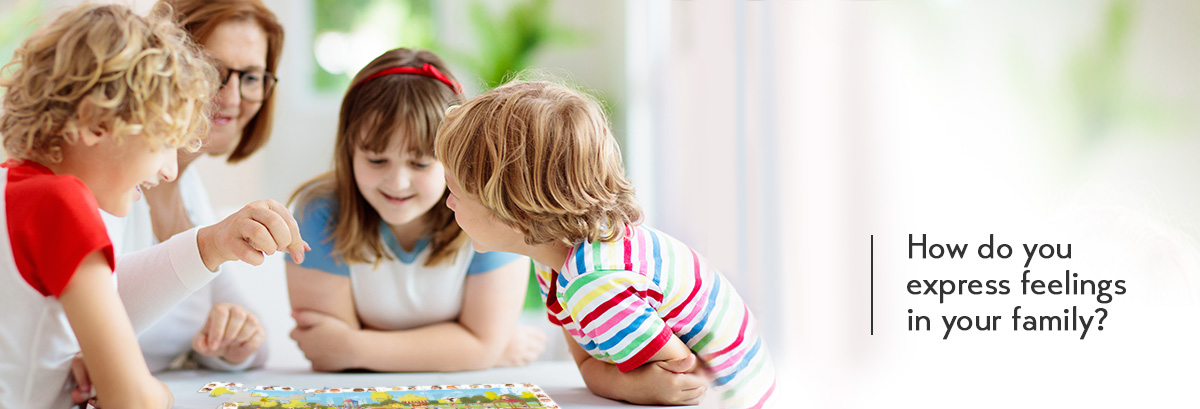
How and why is it worthwhile to grow your child's emotional skills?
A child experiences many kinds of feelings during the day but they don’t yet have the words to talk about them. That’s why feelings are seen and heard. It’s good to teach your child that feelings are allowed, that they are a part of life and that they can show, but that it is also good to control them.
Let’s name our feelings
A child learns words that describe feelings in everyday interactions. Even if your child is very young, you can put their feelings into words by saying “Are you excited?”, or, “I think you feel happy after meeting Grandad.” The child notices that a grown-up understands their internal feelings, which in turns helps them to feel calm. The child learns to describe their own emotional state.
Practice describing your feelings with the help of books and games. Recognise feelings from expressions, perform different feelings yourselves, and discuss the reasons and consequences of different feelings.
Guide your child to recognise feelings
Discuss the feelings a character in a book might have: “How did this character feel? Why does he have that kind of an expression?”
Guide the child to see which signs refer to a certain feeling, for example the expression and position of a character in a book.
Gradually, the child learns to recognise and name their own feelings and to understand that other children have feelings, too.

Photos: FamVeld / Shutterstock.com
Children learn by copying
Tell your child about your own moods. Explain, why you are annoyed by something, or why something made you happy today.
You should also think about what kind of an example you set your child – how do you express feelings in your family?
Talk it out after different situations
When the child does something that makes another person feel bad, tell the child how the other person feels.
Ask how the child would feel if someone did the same to them. By putting themselves in another person’s position, the child learns empathy.
Recognising and controlling one’s feelings helps the child get along with other children. It’s easier to make friends, and working in a group becomes smoother.
Let's learn Feelings puzzle
This 56-piece puzzle offers a grown-up and child an opportunity to examine different feelings together. Little by little, a child can learn to understand their own feelings and to put them into words.
- The high quality 56-piece puzzle is full of wonderful details to explore.
- Comes with a list of questions that can be used to talk about feelings.
- Helps children to understand where different feelings might come from.
Videos
Read out more about the Let’s Learn range here.





